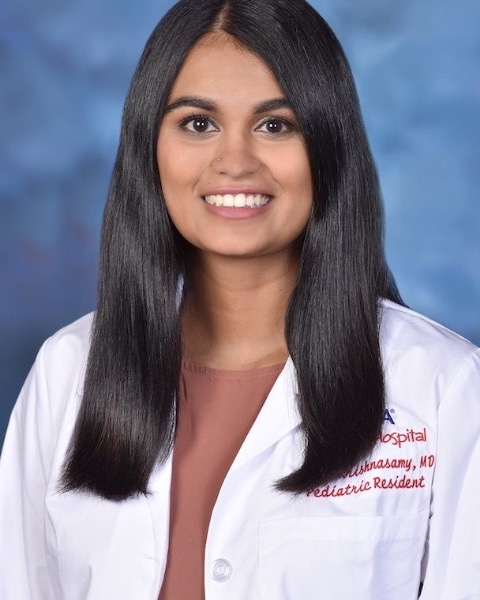Hospital Medicine Works in Progress
Session: Hospital Medicine Works in Progress
WIP 80 - Optimizing Respiratory Therapy Workflows: A QI Initiative to Reduce Unnecessary Interventions
Sunday, April 27, 2025
8:30am - 10:45am HST
Publication Number: WIP 80.7487
Meenu Krishnasamy, Inova Children's Hospital, McLean, VA, United States; Cynthia Gibson, Inova Children’s Hospital, Falls Church, VA, United States; Hollie B. Brose, Inova Fairfax Medical Campus, Charles Town, VA, United States; Amy Weis, Inova Children's Hospital, Falls Church, MD, United States; Melissa Rivera, Inova Children's Hospital, Sterling, VA, United States; Courtney Port, Inova Children’s Hospital, Falls church, VA, United States

Meenu Krishnasamy, MD (she/her/hers)
Pediatric Hospital Medicine Fellow
Inova Children's Hospital
McLean, Virginia, United States
WIP Poster Presenter(s)
Background: Providing safe respiratory care for hospitalized pediatric patients depends on staffing adequate numbers of competent respiratory therapists (RTs). Inadequate staffing often requires assistance from RTs primarily working on adult units and may not allow consistent adherence to national and local guidelines. Applying a de-implementation approach to reduce unnecessary interventions can focus RT work on the high acuity pediatric patients requiring respiratory care. Interventions such as reducing overutilization of high flow nasal cannula have been successful at our institution. We hope to build upon these interventions to optimize RT workflows.
Objective: In collaboration with RTs, RNs and physicians in the pediatric hospital medicine service and pediatric ICU, we aim to decrease the average RT time spent per encounter by 15% within six months. This will be achieved by implementing protocols to reduce overuse of respiratory medications and high flow nasal cannula, and by introducing self or nurse-administered interventions.
Design/Methods: The Model for Improvement will be utilized, testing change in PDSA cycles. Interventions include creating an algorithm to determine appropriateness for RN-administered respiratory medications and reducing the use of ineffective treatments by using a respiratory assessment team, improved communication within the EMR, and utilization of a patient driven protocol for bronchopulmonary hygiene and lung expansion therapies. Outcome measures include the average number of RT floaters from adult units per week, average number of RT assessments per 12-hour shift and average RT time spent per encounter with a respiratory diagnosis related group (DRG). Process measures include the average number of RN-administered respiratory medications per shift per encounter. Balancing measures are the number of escalations in care and readmissions for respiratory issues within 7 days.


